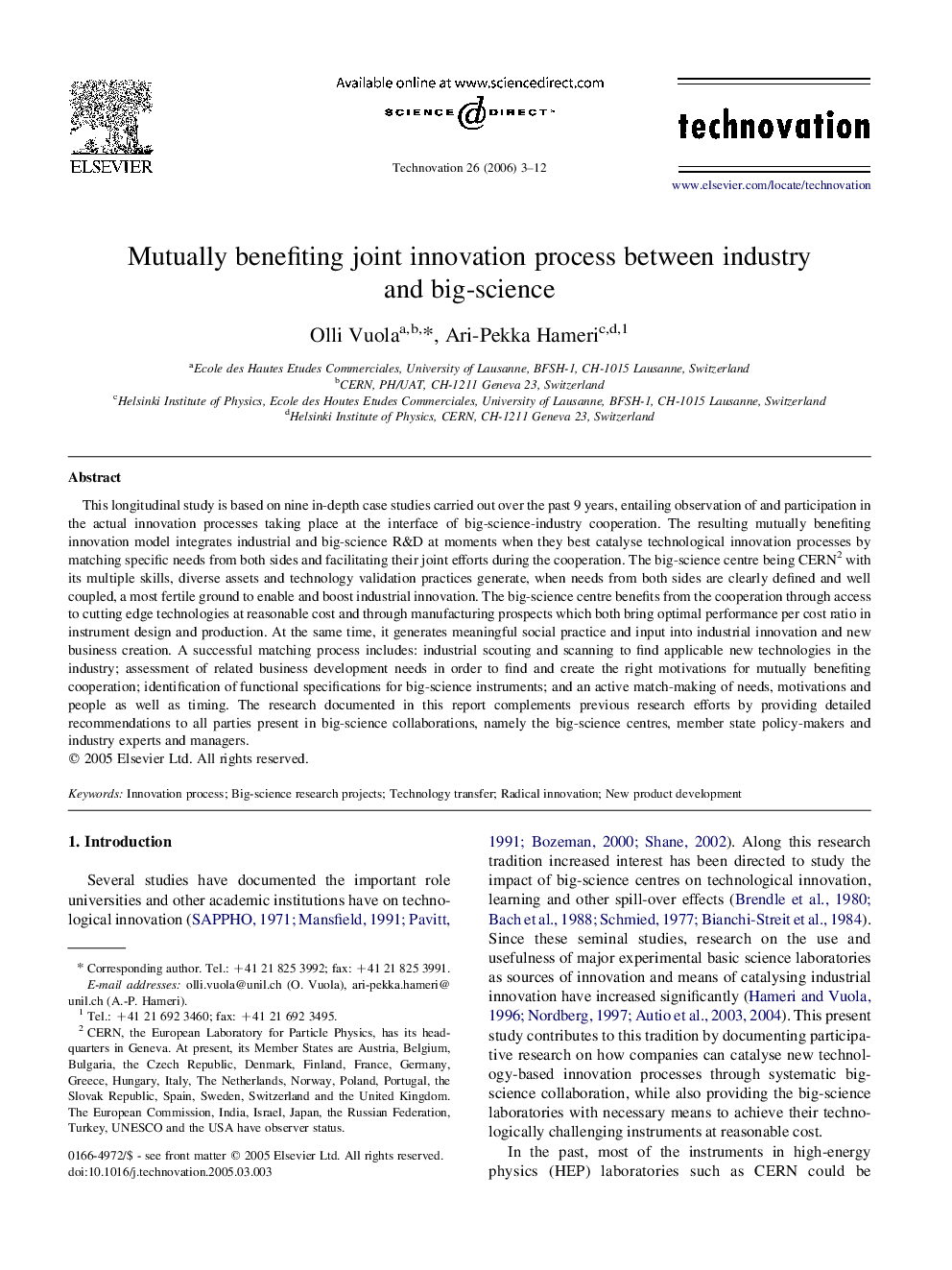| Article ID | Journal | Published Year | Pages | File Type |
|---|---|---|---|---|
| 1022545 | Technovation | 2006 | 10 Pages |
This longitudinal study is based on nine in-depth case studies carried out over the past 9 years, entailing observation of and participation in the actual innovation processes taking place at the interface of big-science-industry cooperation. The resulting mutually benefiting innovation model integrates industrial and big-science R&D at moments when they best catalyse technological innovation processes by matching specific needs from both sides and facilitating their joint efforts during the cooperation. The big-science centre being CERN2 with its multiple skills, diverse assets and technology validation practices generate, when needs from both sides are clearly defined and well coupled, a most fertile ground to enable and boost industrial innovation. The big-science centre benefits from the cooperation through access to cutting edge technologies at reasonable cost and through manufacturing prospects which both bring optimal performance per cost ratio in instrument design and production. At the same time, it generates meaningful social practice and input into industrial innovation and new business creation. A successful matching process includes: industrial scouting and scanning to find applicable new technologies in the industry; assessment of related business development needs in order to find and create the right motivations for mutually benefiting cooperation; identification of functional specifications for big-science instruments; and an active match-making of needs, motivations and people as well as timing. The research documented in this report complements previous research efforts by providing detailed recommendations to all parties present in big-science collaborations, namely the big-science centres, member state policy-makers and industry experts and managers.
